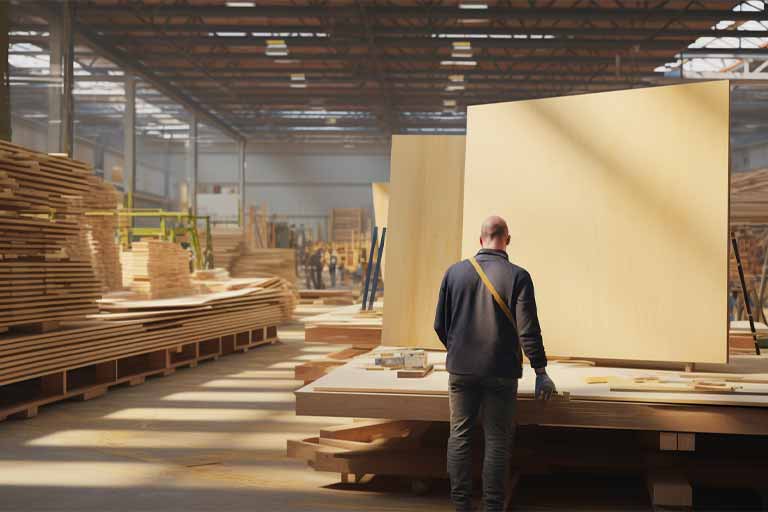
How to Veneer Plywood: Techniques and Tips
How to Veneer Plywood: Techniques and Tips
Veneering plywood is a process of adding a thin layer of wood, or veneer, to the surface of a plywood sheet. This process is commonly used to enhance the appearance of plywood and improve its durability. In this article, we will provide step-by-step instructions on how to veneer plywood, as well as tips and techniques for achieving a professional-looking finish.
Veneering plywood is a technique that has been used for centuries to enhance the appearance of plywood. By adding a thin layer of decorative wood to the surface of a plywood sheet, you can create a professional-looking finish that is both appealing and durable. In this article, we will discuss how to veneer plywood, the materials needed, the types of veneer plywood available, and the best practices for achieving a successful veneer.
Benefits of Veneering Plywood
Veneering plywood has many benefits. It can enhance the appearance of the wood by adding a layer of decorative wood on top. This not only makes the plywood look more appealing, but it can also improve its strength and durability. Veneering plywood can also help to protect the wood from moisture, temperature changes, and other environmental factors that can cause damage over time.
Materials Needed for Veneering Plywood
To veneer plywood, you will need a few materials. These include the veneer sheets, veneer adhesive, a veneer saw, a veneer roller, and a veneer press. You may also need sandpaper, a veneer softener, and a veneer cutter, depending on the type of veneer you are using.
Types of Veneer Plywood
There are many types of veneer plywood available, each with its own unique characteristics and benefits. Some of the most popular types of veneer plywood include:
- Birch plywood: This is a high-quality plywood that is known for its strength and durability. It is often used in furniture making, cabinetry, and other applications where a strong, durable wood is needed.
- Hexa plywood: This is a type of plywood that is made up of hexagonal cells. It is known for its strength and durability, and is often used in flooring applications.
- Film faced birch plywood: This is a type of plywood that is coated with a thin layer of film on both sides. This film helps to protect the wood from moisture, temperature changes, and other environmental factors that can cause damage over time.
- Exterior plywood: This is a type of plywood that is designed specifically for outdoor use. It is made with waterproof glue and is often used in construction applications.
Veneer Bonding Techniques
There are several techniques that can be used to bond veneer to plywood. These include:
- Veneer overlay on plywood: This involves laying the veneer over the plywood and then pressing it down using a veneer roller.
- Veneer pressing on plywood: This involves using a veneer press to apply pressure to the veneer and plywood, ensuring that the veneer is properly bonded to the wood.
- Veneer adhesion on plywood: This involves using a veneer adhesive to bond the veneer to the plywood.
Step-by-Step Guide to Veneering Plywood
- Prepare the plywood surface: Sand the surface of the plywood to ensure that it is smooth and free of any imperfections. If necessary, use a veneer softener to make the wood more pliable.
- Cut the veneer: Cut the veneer to the size of the plywood sheet, leaving a small margin around the edges.
- Apply the veneer adhesive: Apply a thin layer of veneer adhesive to the surface of the plywood using a roller.
- Lay the veneer: Carefully lay the veneer on top of the plywood, making sure to align the grain pattern.
- Press the veneer: Use a veneer press to apply pressure to the veneer and plywood, ensuring that the veneer is properly bonded to the wood.
- Trim the edges: Once the veneer has been applied, use a veneer saw to trim the edges of the plywood sheet.
Best Practices for Veneering Plywood
To achieve the best results when veneering plywood, there are several best practices that you should follow. These include:
- Choosing the right veneer for plywood: When choosing a veneer for plywood, it is important to consider the type of wood, the thickness of the veneer, and the pattern of the grain.
- Enhancing plywood aesthetics with veneer: Veneering plywood can help to enhance the appearance of the wood by adding a layer of decorative wood on top.
- Improving plywood strength with veneer: Veneering plywood can also improve its strength and durability, protecting it from environmental factors that can cause damage over time.
In conclusion, veneering plywood is a process that can help to enhance the appearance of plywood and improve its durability. By following the step-by-step guide and best practices outlined in this article, you can achieve a professional-looking finish that is both appealing and durable. If you’re looking for high-quality veneer plywood, look no further than SFK Plywood! Our selection of film faced plywood, hexa plywood, and plywood slats is sure to meet your needs. Contact us today to learn more about our products and to get a quote.